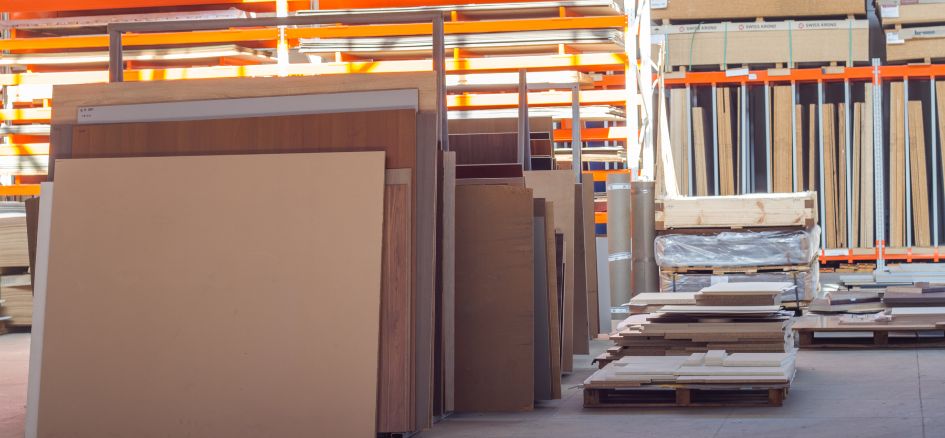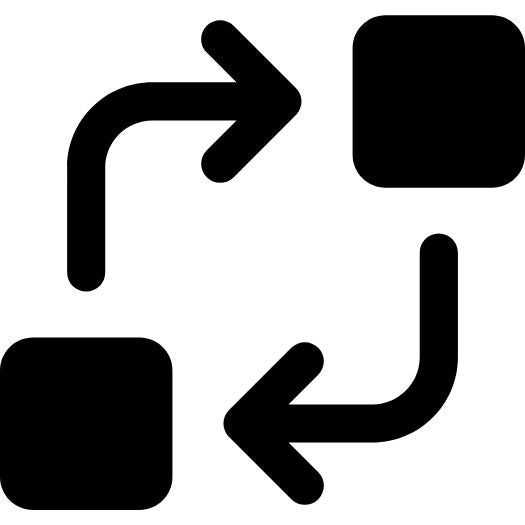When it comes to selecting the right engineered wood for your furniture or interiors, two popular choices emerge—plywood and plyboard. Both materials offer unique advantages, but understanding their differences is crucial for making the right decision. This guide breaks down plywood vs plyboard in terms of composition, durability, cost, and application to help you choose the best option for your needs.
Plywood vs Plyboard: Key Differences
|
Feature |
Plywood |
Plyboard |
|
Composition |
Made of multiple thin veneer layers bonded with adhesive |
Made with a core of wooden strips covered with thin veneer sheets |
|
Strength & Durability |
Stronger due to cross-grain structure |
Less strong compared to plywood, but lightweight |
|
Moisture Resistance |
Available in moisture-resistant (MR), boiling water-resistant (BWR), and boiling waterproof (BWP) grades |
Less moisture resistant due to the core structure |
|
Weight |
Heavier |
Lighter |
|
Flexibility |
More flexible and durable |
More brittle and prone to damage under heavy load |
|
Cost |
Generally more expensive |
More affordable |
|
Best Uses |
Furniture, modular kitchens, wardrobes, and interior panelling |
Interior doors, partitions, and lightweight furniture |
What is Plywood?
Plywood is an engineered wood product made by gluing together multiple thin layers (veneers) of wood with the grain direction alternating at each layer. This cross-laminated structure enhances its durability and strength, making it a preferred choice for high-load applications.
Types of Plywood
✔ MR (Moisture Resistant) Plywood
✔ BWR (Boiling Water Resistant) Plywood
✔ BWP (Boiling Waterproof) Plywood
Advantages of Plywood
✔ High durability and strength
✔ Better moisture resistance
✔ Ideal for heavy-duty furniture
✔ Resistant to warping and cracking
✔ Suitable for both indoor and outdoor applications
✔ Comes in various thicknesses for diverse needs
✔ Holds screws and nails firmly
✔ Available in different grades for commercial and residential use
✔ Offers better aesthetic appeal with natural wood finishes
Related: Best Plywood for Furniture: A Comprehensive Guide for Wardrobes, Kitchens, and Interiors
What is Plyboard?
Plyboard is another engineered wood product consisting of a core made from softwood strips, covered with thin veneer sheets on both sides. Unlike plywood, plyboard has a sandwich-like construction, making it lightweight and cost-effective.
Advantages of Plyboard
✔ Lightweight and easy to handle
✔ Cost-effective alternative to plywood
✔ Less prone to warping due to the internal core structure
✔ Suitable for interior partitions and lightweight furniture
✔ Easier to cut and shape than plywood
✔ Reduces load on furniture structures
✔ Available in a variety of finishes for aesthetic appeal
✔ Best suited for non-load-bearing applications
✔ Offers a smooth surface for laminates and veneers
Related: Where to Buy Plywood in Bangalore: The Ultimate Guide for Builders, Contractors, and Homeowners
Which One Should You Choose?
Your choice between plywood and plyboard depends on the specific use case:
✔ For strength and durability – Choose plywood, especially for furniture, wardrobes, and modular kitchens.
✔ For a lightweight and budget-friendly option – Opt for plyboard for partitions or doors.
✔ For high-moisture areas like bathrooms and kitchens – Go for BWP plywood, as it offers superior water resistance.
✔ For cost-effective interior solutions – Choose plyboard for low-load applications.
✔ For high-end furniture and outdoor applications – Plywood is the better option.
✔ For easy handling and DIY projects – Plyboard is lighter and easier to work with.
✔ For commercial projects with heavy-duty needs – Plywood is more reliable.
✔ For temporary or budget-friendly furniture – Plyboard is a practical choice.
Price Comparison: Plywood vs Plyboard
To better understand the cost factor, here’s a rough price estimate:
|
Material |
Approximate Price Range (per sq. ft.) |
|
MR Plywood |
₹50 - ₹90 |
|
BWR Plywood |
₹80 - ₹150 |
|
BWP Plywood |
₹120 - ₹200 |
|
Plyboard |
₹40 - ₹80 |
Prices may vary based on brand, thickness, and quality. For the latest rates, visit Plyneer’s product page.
Conclusion
Both plywood and plyboard serve distinct purposes in woodworking and interior design. While plywood is a stronger and more durable material, plyboard offers an affordable and lightweight solution. Carefully evaluate your requirements before making a choice to ensure you get the best value for your investment.
For high-quality plywood options for various applications, explore Plyneer’s product range and find the perfect fit for your project.
Further Reading:
✔ Plywood vs. MDF vs. Particle Board: What’s the Right Choice for Your Needs?
✔ 5 Essential Tips for Choosing the Best Plywood for Modular Kitchens
✔ Termite-Proof Plywood: How It Works and Why You Need It








